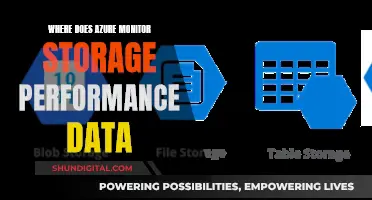
Cisco Performance Monitor is a network monitoring tool that enables users to monitor the flow of packets in their network and become aware of any issues that might impact the flow before it starts to significantly impact the performance of the application in question. Performance monitoring is especially important for video traffic because high-quality interactive video traffic is highly sensitive to network issues. Even minor issues that may not affect other applications can have dramatic effects on video quality.
Cisco Performance Monitor uses similar software components and commands as Cisco NetFlow and Cisco Flexible NetFlow. It provides statistics on packets flowing through a router and is the standard for acquiring IP operational data from IP networks. It provides data to support network and security monitoring, network planning, traffic analysis, and IP accounting.
The configuration for Cisco Performance Monitor involves the following steps:
- Configuring Flow Exporter
- Configuring Flow Record
- Configuring Flow Monitor
- Creating Policy for performance monitor
- Attaching the policy to monitored interfaces
| Characteristics | Values |
|---|---|
| Overview | Monitor the flow of packets in your network and become aware of any issues that might impact the flow before it starts to significantly impact the performance of the application in question. |
| Importance | Performance monitoring is especially important for video traffic because high-quality interactive video traffic is highly sensitive to network issues. Even minor issues that may not affect other applications can have dramatic effects on video quality. |
| Configuration Components | Flow record, flow exporter, flow monitor, class, policy, interface |
| Data Monitored | IP flow destination address and port, source address and port, and protocol, RTP Synchronization Source (SSRC), Media Stream Packet Count, Media Stream Octect Count, Media Packet Loss Count, Media Packet Loss Rate, Packets Expected Count, Media Loss Event Count, Round Trip Time (RTT), Interarrival Jitter (RFC3550) max, Interarrival Jitter (RFC3550) min 2, Interarrival Jitter (RFC3550) mean, Media Rate Variation, Epoch of A Monitoring Interval, Packet Forwarding Status, DSCP and IPv6 Traffic Class |
| SNMP MIB Support | CISCO-FLOW-MONITOR-TC-MIB, CISCO-FLOW-MONITOR-MIB, CISCO-RTP-METRICS-MIB, CISCO-IP-CBR-METRICS-MIB |
| Limitations | Some limitations on which types of interfaces can be monitored on the Catalyst 6000 platform. Performance monitoring on VRFs is not supported. |
What You'll Learn

How to configure Cisco Performance Monitor
Cisco Performance Monitor is an extension of Flexible NetFlow (FNF) that allows you to monitor the flow of packets in your network and become aware of any issues that might impact the flow before it starts to significantly impact the performance of the application in question. Performance monitoring is especially important for video traffic because high-quality interactive video traffic is highly sensitive to network issues.
To configure Cisco Performance Monitor, you need the following items:
- Flow record: This is where you configure the metrics that you want to collect. The command syntax is: `flow record type performance-monitor record-name`.
- Flow exporter: This is where you configure the server that you want to export your metrics to. The command syntax is: `flow exporter exporter-name`.
- Flow monitor: This is where you link the flow record and flow exporter together. The command syntax is: `flow monitor type performance-monitor monitor-name`.
- Class-map: This is used to define what traffic you want to monitor. The command syntax is: `class-map class-name`.
- Policy-map: This is where you add all your class maps. The command syntax is: `policy-map type performance-monitor policy-name`.
- Interface: The policy-map is added to the interface. You can choose between inbound, outbound, or both directions. The command syntax is: `service-policy type performance-monitor {input | output} policy-name`.
Flow record type performance-monitor FLOW_RECORD_TCP
Match ipv4 protocol
Match ipv4 source address
Match ipv4 source prefix
Match ipv4 destination address
Match ipv4 destination prefix
Match transport source-port
Match transport destination-port
Collect routing forwarding-status
Collect ipv4 dscp
Collect ipv4 ttl
Collect ipv4 source mask
Collect ipv4 destination mask
Collect transport round-trip-time
Collect transport event packet-loss counter
Collect interface input
Collect interface output
Collect counter bytes
Collect counter packets
Collect counter bytes rate
Collect timestamp interval
Collect application media bytes counter
Collect application media packets rate
Collect application media event
Collect monitor event
Flow exporter NETFLOW_SERVER
Destination 192.168.2.200
Source GigabitEthernet 0/1
Transport udp 2055
Template data timeout 60
Flow monitor type performance-monitor FLOW_MONITOR_RTP
Record FLOW_RECORD_RTP
Exporter NETFLOW_SERVER
Flow monitor type performance-monitor FLOW_MONITOR_TCP
Record FLOW_RECORD_TCP
Export NETFLOW_SERVER
Class-map TCP
Match access-group name TCP_TRAFFIC
Class-map RTP
Match access-group name UDP_TRAFFIC
Policy-map type performance-monitor PERFORMANCE_MONITOR
Class TCP
Flow monitor FLOW_MONITOR_TCP
Class RTP
Flow monitor FLOW_MONITOR_RTP
Interface GigabitEthernet 0/2
Service-policy type performance-monitor input PERFORMANCE_MONITOR
Service-policy type performance-monitor output PERFORMANCE_MONITOR
There are two ways to configure Performance Monitor:
- Manual: You configure all the items mentioned above yourself.
- Easy Performance Monitor (ezPM): This is a simplified configuration that only requires a few commands. It includes Cisco-validated records, monitors, class-maps, policy-maps, etc.
Is Your Monitor Affecting FPS?
You may want to see also

Cisco Performance Monitor components
Cisco Performance Monitor is an extension of Flexible NetFlow (FNF) and enables you to monitor the flow of packets in your network and become aware of any issues that might impact the flow before it starts to significantly impact the performance of the application in question. Performance monitoring is especially important for video traffic because high-quality interactive video traffic is highly sensitive to network issues.
The configuration of Cisco Performance Monitor involves the following components:
Flow Exporter
The flow exporter defines the destination to which NetFlow packets are exported.
Flow Record
Here, you define records that correspond to Performance and regular Flexible NetFlow fields.
Flow Monitor
A flow monitor caches all the traffic passing through the applied interface, and the flow exporter will export all the traffic as UDP datagrams to the NetFlow server.
Flow Class
A class specifies the filter that determines which flow traffic to monitor.
Policy
The policy creation for Performance Monitor involves specifying the flow monitor, the metrics to monitor, and the parameters for the flow monitor.
Attaching the Policy to the Monitored Interface
The created policy is then attached to an interface for performance monitoring.
Monitor Home Energy and Gas Usage: Save Money, Save Planet
You may want to see also

Cisco Performance Monitor data monitoring
Cisco Performance Monitor is an extension of Flexible NetFlow (FNF) that enables you to monitor the flow of packets in your network and become aware of any issues that might impact the flow before it starts to significantly impact the performance of the application in question. Performance monitoring is especially important for video traffic because high-quality interactive video traffic is highly sensitive to network issues.
Cisco Performance Monitor uses similar software components and commands as Cisco NetFlow and Cisco Flexible NetFlow, so familiarity with these products will help you to understand how to configure Cisco Performance Monitor.
To configure Cisco Performance Monitor, you need to configure the following:
- Flow record: This is where you specify the metrics that you want to collect.
- Flow exporter: This is where you specify the server that you want to export your metrics to.
- Flow monitor: This is where you link the flow record and flow exporter together.
- Class-map: This is where you define what traffic you want to monitor.
- Policy-map: This is where you add all of your class maps.
- Interface: The policy-map is added to the interface. You can choose between inbound, outbound, or both directions.
- Flow record: Use the "flow record type performance-monitor" command to specify the metrics that you want to collect. You can collect various metrics such as IPv4 source and destination addresses, transport source and destination ports, routing forwarding status, IPv4 DSCP, IPv4 TTL, transport round-trip time, transport event packet-loss counter, interface input and output, counter bytes and packets, application media bytes and packets, etc.
- Flow exporter: Use the "flow exporter" command to specify the server that you want to export your metrics to. You need to specify the destination, source interface, transport protocol, and template data timeout.
- Flow monitor: Use the "flow monitor type performance-monitor" command to link the flow record and flow exporter together. You need to specify the flow record and flow exporter that you configured in the previous steps.
- Class-map: Use the "class-map" command to define what traffic you want to monitor. You can use access lists and match criteria to specify the traffic.
- Policy-map: Use the "policy-map type performance-monitor" command to add all of your class maps. You need to specify the class, flow monitor, and monitor parameters.
- Interface: Use the "service-policy type performance-monitor" command to apply the policy-map to the interface. You can choose between input, output, or both directions.
You can also use Easy Performance Monitor (ezPM), which is a simplified configuration that only requires a few commands. ezPM includes Cisco-validated records, monitors, class-maps, policy-maps, etc.
Recording Monitors: Interface Connection Guide for Beginners
You may want to see also

Cisco Performance Monitor limitations
Cisco Performance Monitor has some limitations on the Catalyst 6000 platform. These include:
Limitations on the types of interfaces that can be monitored. The tables below show which types of interfaces are supported for ingress and egress monitoring on the Catalyst 6500 platform.
Table 1: Support for Ingress Interfaces
- Layer 3 Sub-interface (a)
- Layer 3 port channels
- Layer 3 port-channel sub-interface (a)
- Partial (see the third bullet below)
- Layer 2 Physical (Switched) Ports
- Layer 2 Port-channels
Table 2: Support for Egress Interfaces
- Layer 3 Sub-interface (a)
- Layer 3 port channels
- Layer 3 port-channel sub-interface (a)
- Layer 2 Physical (Switched) Ports
- Layer 2 Port-channels
- Performance monitoring on VRFs is not supported.
- Performance monitoring of multicast flows is supported only on the ingress direction.
- Routed traffic from a trunk port on a VLAN interface cannot be monitored because the source VLAN interface for the traffic cannot be identified.
- Performance monitoring policies on the egress of a VLAN interface will not monitor traffic getting bridged within the VLAN due to hardware limitations.
- Cloned packets from egress policies can only be software rate-limited, resulting in high interrupt CPU usage when many flows are being monitored.
- Egress performance monitoring introduces several microseconds of additional latency to the frame switching.
- Performance monitoring is not supported for packets switched using the Fast (CEF) Path.
- Lawful intercept and performance monitoring use the same mechanism for cloning packets, and the Lawful Intercept feature takes precedence. Therefore, performance monitoring does not function when the Lawful Intercept feature is enabled.
- Performance monitoring uses the same mechanism as other features, such as Optimized ACL logging, VACL Capture, IPv6 Copy, etc. The feature that is enabled first takes precedence, and the others are blocked from being configured.
- When reacts (including media-stop) are configured under a performance monitoring policy, and the traffic is unstable, syslog messages are logged into the buffer and not printed on the console screen.
Cisco Performance Monitor also has the following restrictions:
On Cisco ASR 1000 Series Aggregation Services Routers, you can configure only 30 fields in a flow record.
Acura RDX: Blind Spot Monitoring Feature Explained
You may want to see also

Cisco Performance Monitor troubleshooting
Troubleshooting Cisco Performance Monitor involves a series of steps that can be taken to ensure that the monitor is collecting data.
Firstly, the user should check the configuration and status of the flow exporter using the command:
Show flow exporter
Next, the user should check the configuration and status of the flow record using the command:
Show flow record type performance-monitor
The user should then check the configuration and status of the flow monitor using the commands:
Show flow monitor type performance-monitor
Show running-config flow monitor
The user should then check the configuration and status of the flow class using the command:
Show policy-map type performance-monitor or show class-map
The user should then check the configuration and status of the flow policy using the command:
Show policy-map type performance-monitor
Finally, the user should check the configuration and status of the service policy using the commands:
Show performance monitor history
Show performance monitor status
Show policy-map ypre performance-monitor interface
If the user has followed the above steps and is still unable to verify that the Cisco Performance Monitor is collecting data, they should complete the following steps:
The interface to which the user applied the input flow monitor must be receiving traffic that meets the criteria defined by the original flow record before the user can display the flows in the flow monitor cache.
The user should use the following command:
Show policy-map type performance-monitor [interface interface-name] [class class-name] [input | output]
The user should then use the following command:
Show performance monitor status [interface interface name [filter] | policy policy-map-name class class-map-name [filter]] | filter]
Where filter = {ip {source-addr source-prefix | any} {dst-addr dst-prefix | any} | {tcp | udp} {source-addr source-prefix | any} {[eq | lt | gt number | range min max | ssrc {ssrc-number | any} | {{dst-addr dst-prefix | any} eq | lt | gt number | range min max | ssrc {ssrc-number | any}}
Finally, the user should use the following command:
Show performance monitor history [interval {all | number [start number]] | interface interface name [filter] | policy policy-map-name class class-map-name [filter]] | filter]
Where filter = {ip {source-addr source-prefix | any} {dst-addr dst-prefix | any} | {tcp | udp} {source-addr source-prefix | any} {[eq | lt | gt number | range min max | ssrc {ssrc-number | any} | {{dst-addr dst-prefix | any} eq | lt | gt number | range min max | ssrc {ssrc-number | any}}
Understanding Monitor Specs: A Quick Guide to Resolution, Refresh Rates
You may want to see also
Frequently asked questions
Cisco Performance Monitor is a tool that enables you to monitor the flow of packets in your network and become aware of any issues that might impact the flow before it starts to significantly impact the performance of the application in question. Performance monitoring is especially important for video traffic because high-quality interactive video traffic is highly sensitive to network issues.
Cisco Performance Monitor uses similar software components and commands as Cisco NetFlow and Cisco Flexible NetFlow. It provides statistics on packets flowing through a router and is the standard for acquiring IP operational data from IP networks. It also provides data to support network and security monitoring, network planning, traffic analysis, and IP accounting.
Cisco Performance Monitor helps to identify problems proactively. It takes a 3-step approach to monitoring Cisco devices: data collection, threshold verification, and fault notification. It also supports a wide range of Cisco devices and technologies, such as NetFlow, IP SLA, CBQoS, and NBAR.







